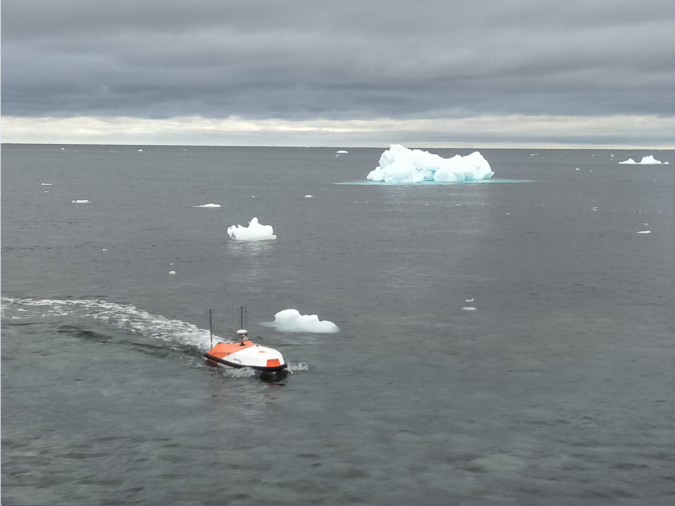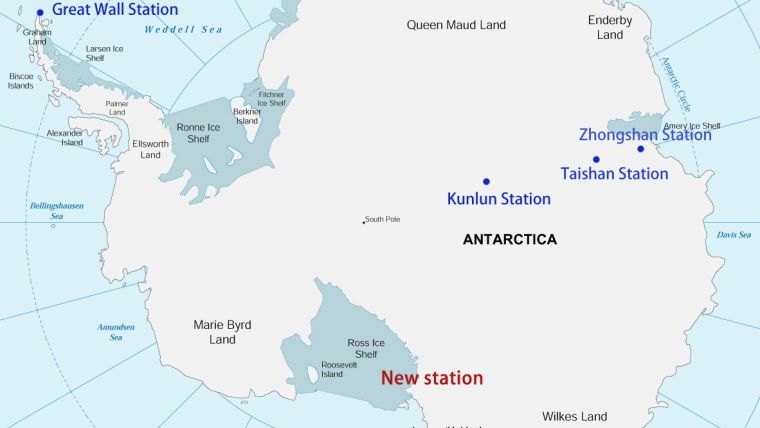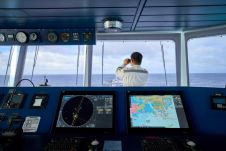Unmanned Technology Unveils the Mystery of Antarctica
USV Fills Data Gap for Polar Expedition
Not long ago, China’s fifth Antarctic scientific research station – the Ross Sea Station – officially laid its foundation stone on Inexpressible Island (74°54’S 163°39’E). While preparation and research already began a few years ago, the construction work will take another four years to fully complete. In November 2017, four unmanned surface vessels (USVs) from Oceanalpha Co., Ltd teamed up with the Antarctica expedition ship ‘Snow Dragon’ all the way south to the Ross Sea to assist the construction project. The USVs worked for nearly 40 hours, completing a multibeam full-cover seabed topographic survey of five square kilometres. This not only fills the data gap in the region but also provides spatial geographic data support for marine navigation and the construction of the new station.
This is China’s 34th Antarctic expedition and is aimed at building the nation’s fifth Antarctic station, following on from the Great Wall Station, Zhongshan Station, Kunlun Station and Taishan Station.
The expedition team consists of 334 members from more than 80 companies and organisations. During the expedition, the team made full use of the ship-based, ice-based and sea-based platforms to conduct joint observations on land, ocean, atmosphere, ice shelf and organisms. Their investigations will also help to establish the national Antarctic Observation Network, protect the marine environment and control pollution around the station.
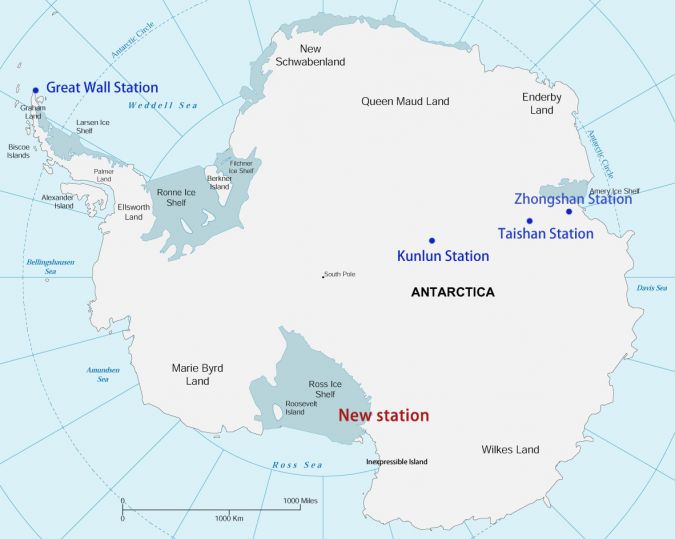
Oceanalpha’s USVs visit Antarctica for the first time
Changxin Liang, an engineer from Oceanalpha, was selected by the national expedition team last July. He boarded the mother ship, Snow Dragon, with two M80 USVs and two SE40 USVs to carry out the autonomous hydrographic survey mission.
In the past, hydrographic surveys relied mainly on manned vessels which would alert surveyors on board to safety hazards but could only explore within channels. The application of unmanned vessels greatly enlarges the survey area and reduces labour costs and fuel costs since they run on electricity or diesel.
The specific tasks of the USVs in this expedition include bathymetric survey, seabed topography survey, water flow and tide survey. Detecting the direction of water flow will provide a reference to the design of the water circulation system in the station; observing tides and finding the highest point of sea level will determine the altitude position of the station so as to avoid it being inundated by seawater.
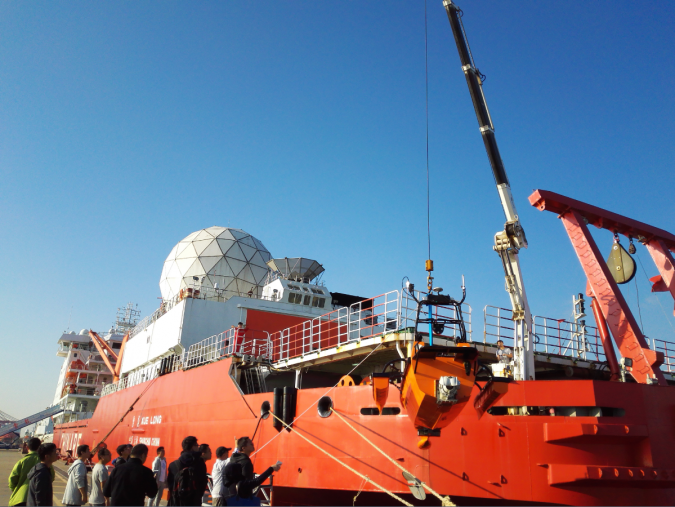
It’s all about time, time and time
The application of USVs is highly subject to weather conditions. When the weather is poor, the team can only find two hours of undisrupted time to get the USV working. “The weather in Antarctica is unpredictable. When we were hanging down the USV, everything was fine, the weather was peaceful, but as soon as the USV touched the sea surface, snow suddenly started falling and the temperature dropped instantly. It’s like the weather was challenging our resolution to continue, but we never gave up,” comments Liang.
With the mother ship supporting more than 200 missions, it is never easy to find an overlapping interval. Liang continues: “We had to race against the weather, as well as coordinate with other 200 project teams that were waiting in line to get their missions done with the mother ship within strictly limited time.”
Every project has a tight restriction on members and equipment. Each team can only be equipped with two to three staff members. Equipment should be highly integrated; on-site assembly which would take too much time and energy is unacceptable.
In an interview, Dr JinJing Pu, the marine application technology director of Oceanalpha as well as the leading R&D engineer of the M80 USV, claimed: “When developing the Antarctica expedition USV, the M80, we bear in mind all the limitations but never compromise in its multi-functionality and humanisation”.
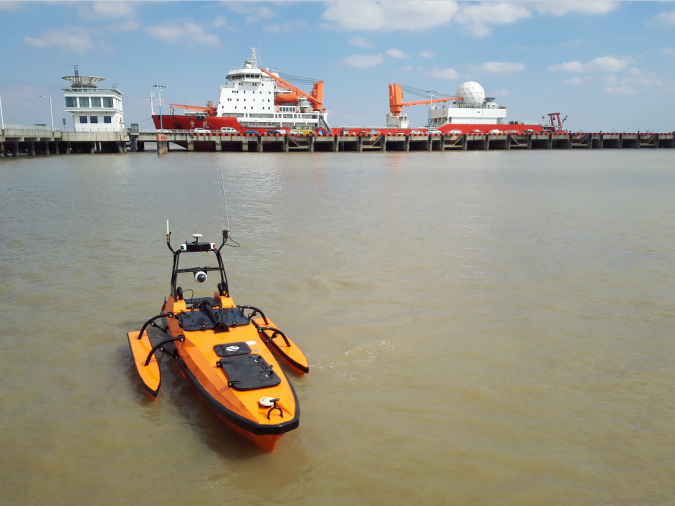
Dr Pu was originally a teacher at Qingdao Ocean University and once spent more than 800 days at sea for research. In 2016 he decided to leave the university and join Oceanalpha in order to participate in the development of marine USVs which in the future can help peers and juniors to conduct ocean expeditions that involve higher work intensity and bigger risks.
According to Dr Pu, M80 is modular-designed so it can be assembled conveniently and gives large capacity to survey instruments. With the crane and hooking devices, the USV can be launched and retrieved easily. Its autonomous system requires only two to three operators to conduct multiple surveys at a time.
During the whole expedition, the team worked for five days while the Snow Dragon was unloading materials in the new station. It then had to stop for ten days because the Snow Dragon was leaving for Zhongshan Station for other projects. The expedition could then continue for another three days when the Snow Dragon went back to the Ross Sea. In the first five days, the team surveyed 3.6 square kilometres of sea area, and a total of nearly five square kilometres over two periods.
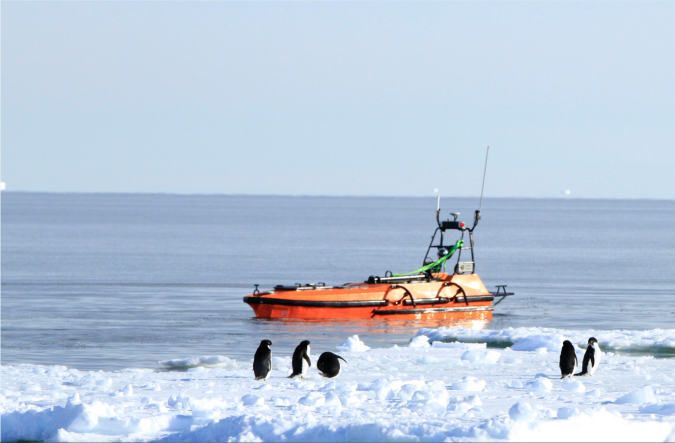
Surveying in Antarctica: Why can USVs shoulder such a task?
Strong winds and water flows in Antarctica could bring a lot of ice floes which might bump a survey vessel off its planned path or even cause a crash. According to Dr Pu, drawing a precise survey line on water is an unparalleled advantage of a USV, which means it can sail in high accordance with the planned route enabling the mounted sensors to scan the seabed evenly, forming an accurate seabed topographic map.
Although the M80 was constantly hit by randomly drifting ice, its working pattern never got affected.
Dr Pu revealed the secret that qualified the M80 USV for the polar expedition: “The adoption of artificial intelligence and advanced algorithms ensures the accuracy of the USV’s sailing route. When combining the autonomous obstacle avoidance system with the manual remote control mode, most emergencies can be resolved. The uniquely designed bulbous nose can also cushion the impact of waves and ice floes. The second generation of M80 USV has improved in material from composite to aluminium. Aluminium alloy is more flexible so when a crash happens the USV will be deformed at most; its hull won’t stop functioning. If the damage is serious, it can easily be repaired by cutting and welding. Due to the low temperature, the lifetime of electric vessels is shortened sharply in Antarctica, making them unqualified for Antarctica expeditions. The M80 is powered by diesel which only freezes at -35° C.”
Written by Chris Yan, [email protected]
